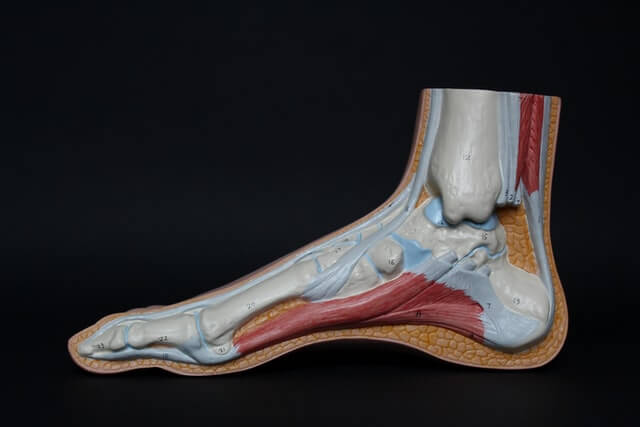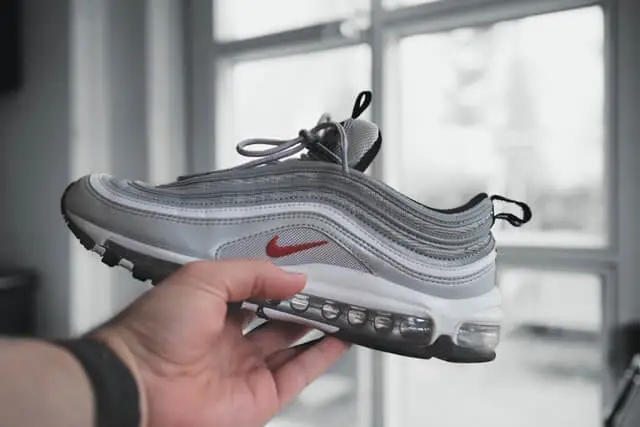Knowing your shoe size is important especially if you are a runner.
Essentially, knowing your foot width and its comparison to a pair of shoes is most important. Shoes come in multiple sizes: small, medium, wide, extra wide, enabling everyone fit in a size.
Identifying wide size shoes can be confusing, thanks to the terminologies used to describe the sizes for both men and women.
What is considered a wide foot for a man or woman?
If you have ever tried to fit in your perfect fit shoe lengthwise then you feel cramped on the sides, the writing on the wall is clear, you need wide width shoes.
Wide width shoes are usually normal sized shoes with a similar overall length but with an increased toe box and fore foot to give room to your wide feet. Wide feet individuals have characteristic wider toes and forefoot.
You might be tempted to ask yourself this question
Why do I have wide feet?
Feet have different shapes and sizes. One of the major causes of wide feet is genetics; it runs in your family and it was inevitable for you.
Secondly, your feet might just have broadened as you continued to age or thirdly, because of medical conditions. Edema for instance will force you to adjust your shoe size to minimize potential health effects.
Measuring shoe width sizes

Various brands and styles use different methods to measure their shoes. Two conventions have however remained consistent to help men and women identify their sizes; letter system and the word based system.
Letter sizing
Though slim and super slim are terms common when measuring women shoes, they equally translate to narrow and extra narrow.
While a shoe fit with an ‘A’ width on a woman’s shoe is used to consider it narrow or extra narrow, the similar notation on a man’s shoe indicates that the shoe is extra narrow.
The more the ‘A’s, the narrower the shoe; for example, AAA.
‘B’ width is the standardized width for women and to men a narrow width.
The letter ‘D’ on the other hand is considered the standardized width for men while it indicates a wide fit for women.
And the letter ‘E’s increase the overall width of both women and men shoes. While a 2E on a man’s fit is considered wide, it is extra-large on women’s shoes.
However, in countries where UK sizing is followed ‘E’ tends to be similar to regular/medium in US sizing. Some brands use E, EE, EEE and in that case more Es means wider.
If you are still confused about your shoe size you can refer to this sizing guide
Word based sizing
This is the use of the terms normal, medium, wide or extra wide to define a shoe fit.
How do I know I need wide running shoes?

Just like tight fitting attire, running in small shoes is uncomfortable and can cause harm on your feet. With cramping of the fore feet and the wider toes, you won’t maximize your running efforts. You will also know you need wider shoes when you experience the following complications:
- Numbness or a tingling feeling on the toes
- Blisters on the top of or between my toes
- Bruised toes
The conviction that my toes are not breathing well in my running shoes is an indication that it’s time to head back to the shoe store to get myself a new perfect fit shoe.
How much wider is a wide width shoe?
The standard wide fit shoe is usually 10cm in width while an extra wide shoe will measure around 11cm across your foot. While shopping for a wide width shoe fit might be a hustle, it is still necessary to make sure you wear a shoe that has about ½ space between your longest toe and the tip of your shoe.
Wide feet measurement
You will know your foot has a normal width when your foot is 3 9/16” wide and you wear a size 8 shoe. However, if you have the same measurement and wear a size 5 shoe, you definitely need to go for a wide shoe. It is preferable to measure your feet in the evening when they are on their largest.
So, how do you measure wide feet?
- Wear fitting socks that you can go out in comfortably
- Tape two pieces of white paper on the floor
- Trace your foot on the paper or if possible, get someone to do it for you
- Using a ruler, measure the width of the widest part of your foot on the traced piece
- Record both measurements of your right and left feet
- Deduct 1/8” from the highest recording and state it as your width
- Take a sizing chart and check out your size based on your measurements
How will you know your shoes are of the right width?
Research has found out that approximately 70% of people wear the wrong size of footwear. Running is healthy and boosts happiness especially if you are not causing strain on your feet.
However, uncomfortable running can tamper with your gait and put pressure on your joints. You can consider these points to ensure you are wearing a perfect fit:
- Avoid purchasing shoes based on your previous size. Measure your feet every time you want to buy shoes.
- So as to not under estimate your foot width, measure your feet in the evening when they are at their largest.
- Buy shoes basing on the measurements of your biggest foot. Remember one foot can be bigger than other.
- Avoid focusing on size alone when buying shoes. Different brands and styles have varying sizes
- Don’t buy a smaller shoe expecting it to stretch out eventually. If they don’t fit properly, move on
- When trying on shoes, walk around to allow your feet spread under your weight.
Summary
Having a wide width foot is not a new thing. Caused by genetics, health issues, pregnancy and aging, every individual with a wide foot should not force their feet into a smaller fit.
Wearing small shoes are detrimental to your feet. Eventually, your feet will start to have a tingling feeling and numbness, or worse, you might develop unsightly sores that will affect your gait.
If you find out that all the shoes on an off-the-rack are not fitting no matter the size you try to fit, it’s time to consider wide width shoes. Avoid the glam of going for a foot wear based on the brand.
Different brands have different sizes, to get yourself a good fit for running shoes, get to a store with a savvy selection and pick one that is comfortable on your foot.
Recommended Articles
